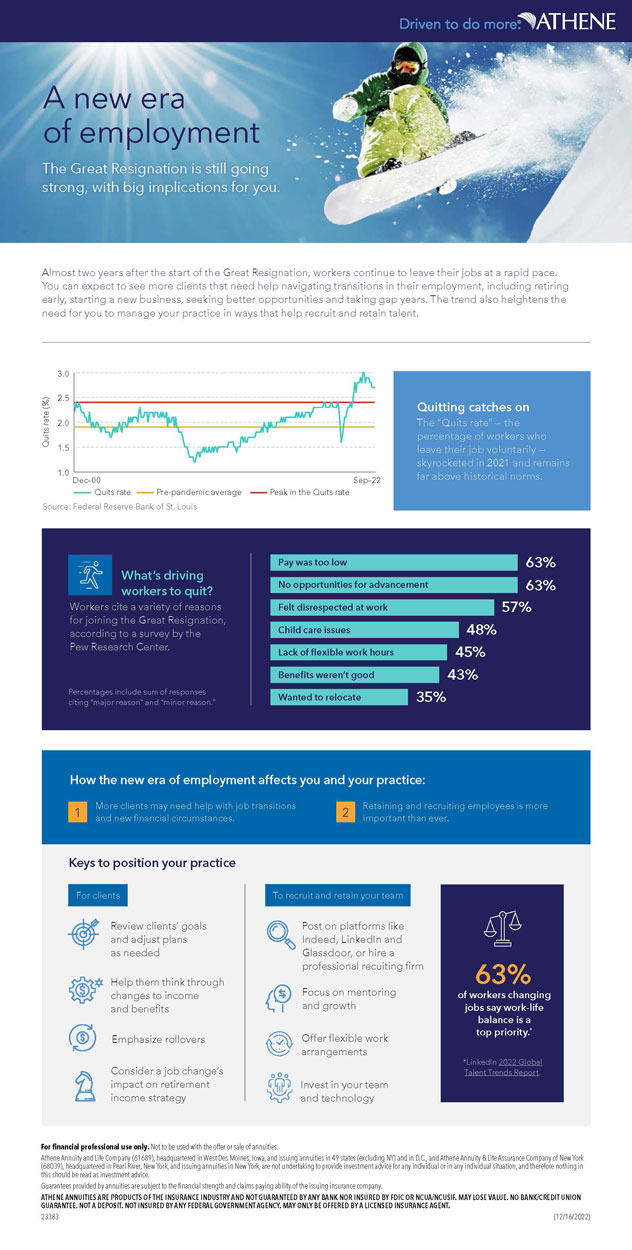Read time:
2-minute
article
What the “Great Resignation” means for your clients and your practice
This content is categorized as:
While the Great Resignation started in 2021, evidence suggests that employees are still leaving their jobs, and sometimes, even the workforce entirely, at a higher-than-average rate. For you, the impact of this trend is twofold.
First, you likely have clients who quit or are thinking about quitting their jobs. As a result, you need to work closely with them to help protect their long-term goals by keeping their saving strategies on track or adjusting them based on their changing needs.
Second, your own practice may be feeling firsthand the challenges of recruiting and retaining high-performing employees.
 |
This infographic takes a look at the primary factors driving workers to quit their jobs. In addition to providing insight into your clients, it offers a few helpful tips to support your practice to accommodate the needs of your team members.
Download the infographic
|
Discover what’s driving workers to quit
Understanding the “why” behind the Great Resignation is important. With this knowledge, you can foster a more inviting environment for your team and improve your recruitment and retention efforts. The statistics show that while 63 percent of workers quit their job because they considered the pay to be too low, there are also other factors at play:
- 63 percent wanted a better work-life balance
- 57 percent felt disrespected at work
- 48 percent cited childcare issues
- 45 percent said their employer lacked flexible working hours
Adapt your practice to embrace the new era of employment
It’s important to share key strategies with your clients as they make career changes. For example, if a client changes jobs in search of more flexible hours, it’s an opportunity to discuss how the change may affect their ability to save for and spend in retirement, as well as how to prepare for the future. It’s important to let clients know that what may seem like a short-term move may have long-range impacts worth planning for.
In addition, it’s helpful to apply your learnings to your own practice so that you can provide your employees with a work environment that serves their needs and yours. By understanding the motivations that drive career change today, you may be more likely to keep your own staff satisfied and be better prepared for any turnover that does occur.
Insights on Athene Connect. Tips, tools and resources to grow your business by helping clients retire with confidence.